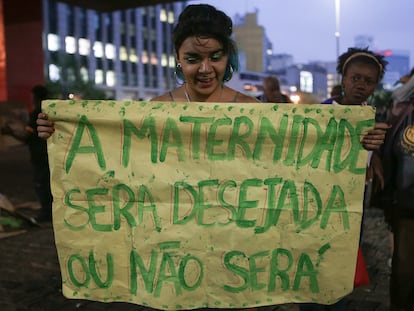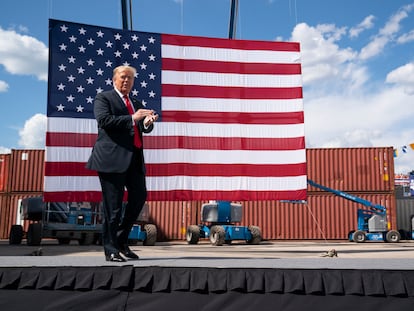Scratches, scars, or permanent damage
A recovery plan that is as large and generous as necessary needs to be designed, without obsessing over the cost

Why are some recessions short-lived, while others seem to last forever? Why, after a negative shock, does unemployment sometimes rise rapidly but then takes many years to return to its pre-shock level? Why does it seem that the recessions of the last decades have had a negative impact both on the level and on the growth rate of potential GDP?
The answer to these questions hinges on the concept of hysteresis, which describes situations where a transitory economic shock generates permanent effects. In simple health terms, a badly cured flu that leaves respiratory damage, or a poorly rehabilitated muscle injury that becomes chronic and limits mobility.
Hysteresis breaks the classical dichotomy that only structural policies (the famous “reforms”) have permanent economic effects, and introduces an element of history dependency into the evolution of the economy. This implies, for example, that a temporary increase in unemployment, if allowed to last too long, can increase equilibrium unemployment. And that, therefore, the resolution of a recession cannot be left half finished: a badly managed recession generates permanent negative effects. Shortage of demand destroys supply.
Faced with a shock that is deep and persistent but transitory, central banks and governments have reacted quickly and aggressively
Fortunately, hysteresis operates symmetrically. The last decade in the United States shows that demand may create its own supply: the long expansionary cycle regenerated the labor supply and reduced unemployment to 3.5%, the lowest in 50 years, without generating inflation, well below the 5% that only in 2015 was believed to be the level of non-inflationary unemployment.
The reaction to the Covid-19 crisis has built on some of the lessons of the past decade. Faced with a shock that is deep and persistent but transitory, central banks and governments have reacted quickly and aggressively, rightly minimizing fears related to moral hazard (the possible negative impact of their actions on governments or private sector incentives) and to the level of debt and deficits.
An innovation that many European countries have adopted, with very positive results, has been the short-term work furlough schemes (known as ERTEs in Spain), focused mainly on minimizing hysteresis. A key reason why unemployment is slow to decline after a recession is the breakdown of the relationship between workers and companies – the implicit friction in job search that stifles and slows job creation.
The flexibilization of ERTEs has reduced this friction and improved the response of the Spanish labor market to the Covid-19 shock, a real-time example of an effective structural reform. One of the measures of success will be how many of these ERTEs are reabsorbed as employment instead of ending in layoffs. This will depend, at the macro level, on whether the demand stimulus is maintained for as long as necessary; and, at the micro level, on finding the right balance between prolonging the support to firms as much as necessary and fine-tuning the incentives to re-employment without preventing the reallocation of resources.
In this situation, the exit strategy must be based on economic outcomes, not on predetermined time horizons
The recession will likely be the shortest in history – in the US it may have lasted just two months – but the rehabilitation period will be long, until there is a vaccine that allows a full return to normality. The key to ensure that this crisis only leaves some scratches or minor scars, and does not have permanent economic consequences, is to design a rehabilitation process that is as long and generous as necessary. In the face of a systemic shock, governments have to act as insurers and risk managers of last resort. That will prevent a build-up of pessimism, a shrinkage of investment, and a weakening of long-term growth. And this requires the avoidance of obsessing on the immediate fiscal “cost” of the necessary measures, such as ERTEs. If well designed, these measures are not an expenditure but rather an investment that prevents the reduction of potential growth. Let us not forget that debt and deficits are not objectives in themselves, but instruments of economic policy. The key is the quality of economic policies, not the quantity of the deficit.
In this situation, the exit strategy must be based on economic outcomes, not on predetermined time horizons. For example, keeping short-term employment schemes, household income support, and public guarantees, until the economic restrictions have been completely eliminated. And committing to maintaining an expansionary fiscal policy at least until GDP recovers its pre-Covid-19 levels. This should be endorsed by the necessary reform of the stability and growth pact. It is a concept similar to that adopted by the ECB, which has stated that it will maintain the Pandemic Emergency Purchases Program until inflation recovers the levels prior to Covid-19.
This exit strategy will undoubtedly have to be complemented by a medium-term plan for tax reform, productivity improvement, and reduction of inequality, in coordination with the new European Reconstruction Fund. But these medium-term needs must not divert attention from the immediate need to extend the fiscal stimulus as much as necessary. To flourish in the medium term, you must first survive in the short term.
Tu suscripción se está usando en otro dispositivo
¿Quieres añadir otro usuario a tu suscripción?
Si continúas leyendo en este dispositivo, no se podrá leer en el otro.
FlechaTu suscripción se está usando en otro dispositivo y solo puedes acceder a EL PAÍS desde un dispositivo a la vez.
Si quieres compartir tu cuenta, cambia tu suscripción a la modalidad Premium, así podrás añadir otro usuario. Cada uno accederá con su propia cuenta de email, lo que os permitirá personalizar vuestra experiencia en EL PAÍS.
¿Tienes una suscripción de empresa? Accede aquí para contratar más cuentas.
En el caso de no saber quién está usando tu cuenta, te recomendamos cambiar tu contraseña aquí.
Si decides continuar compartiendo tu cuenta, este mensaje se mostrará en tu dispositivo y en el de la otra persona que está usando tu cuenta de forma indefinida, afectando a tu experiencia de lectura. Puedes consultar aquí los términos y condiciones de la suscripción digital.











































